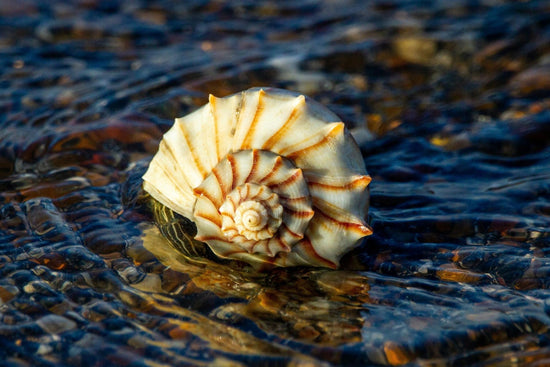Now is the time, Sea Witches. Now is the time to gather, harvest, collect and preserve the food and medicine growing in abundance all around us so that we can make use of it throughout the dark seasons!
If you gather away from your own property, please always make sure it’s legal to pick the plants you’re taking, and verify that they are safe for your intended purposes! You don’t have to be a gardener or an expert to capture some summer magic for later - just an active observer and diligent googler.
Here are a few ways the Sea Witch likes to capture the bounty of summer for future rainy days:
1. Press Flowers in a Book
 photo by Kelly Sikkema
photo by Kelly Sikkema
Save a sliver of the July kaleidoscope by pressing a few special petals and blossoms into the pages of a rarely-needed book. Choose a thick, heavy one that you wouldn’t mind getting damaged, as there is always a chance that moisture from the flowers will stain the pages. Use a sheet of baking parchment or other smooth, absorbent paper (like a coffee filter or thin cardboard) to protect the pages from damage.
Select fresh blossoms at their most vivid and let them dry in the sun for a bit before you press them to avoid trapping moisture that could mold! Avoid flowers with large, thick centers, or cut them in half and let them bleed out onto something absorbent before pressing.
Open your book and fold your paper into the crease. Lay your blossoms flat (not overlapping) onto the paper and close the book slowly and carefully, making sure your flowers stay where you want them.
Stack a few more books or something heavy on top of the book you pressed your flowers in, and check back in 3 - 4 weeks! If the petals feel totally dry and papery, they're done! If there's any moisture left, replace the parchment paper and leave them for another week.
Once they’re dry, you can use them in all kinds of artwork, scrapbooking, correspondence, or gifting. Tape them to your postcards, slip them into picture frames, or paint them onto surfaces with mod podge! There’s no wrong way to use them!
2. Dry Your Herbs & Fruits
If you’re already a gardener, you’re ahead of the game! If not, you can search to find out what kinds of native plants grow around where you live. Once you can identify them, the world is your herb garden! Some of our favorites are lavender, chamomile, rosemary, mint, lemon balm, rose petals, and juniper.
A dehydrator is the best tool for drying berries and fruit slices, and works efficiently for herbs, too. A good old fashioned hanging bundle works just as well for plants with less moisture content, though, and dried herb bundles make wonderful natural incense, and are useful for smoke cleansing and meditation. Just don’t bundle your herbs too tight, and keep the bundles under an inch in diameter to ensure even drying.
You can also put your oven on the lowest bake setting and let your herbs dry out on a cookie tray with the oven door slightly ajar for about a half hour. Monitor this method closely! Store the loose dried herbs in air-tight containers to use later for teas, ritual baths, spell work, or fragrant simmer pots.
3. Make Potent Tinctures
 photo by Hannah Gabrielson
photo by Hannah Gabrielson
A tincture is a concentrated herbal extract made by soaking a medicinal plant in alcohol or vinegar until its active properties are extracted into the surrounding liquid. To make one, fill a sanitized jar half way with your herb of choice, fill with alcohol or vinegar and seal. Shake the jar twice a day for at least a month, then strain through a cheesecloth.
Never, ever self-medicate or ingest any part of a plant without thoroughly ensuring that it is safe for you to do so, and that the plant in question is indeed what you believe it to be! Research risks, side effects and drug interactions, and check with your doctor to make sure you’re not putting yourself in any danger.
4. Can, Jar, Pickle & Preserve

For all of human history, we've been faced with the problem of feeding ourselves through the barren seasons, and we've devised multitudinous methods of preserving our food. Where there wasn’t a way to keep things cold, we’ve used things like salt, sugar, smoke, fermentation and dehydration to prevent the summer’s harvest from spoiling over winter.
In 1809, a new method of preserving food was developed in France for Army and Navy use. Canning involves sterilization by heat, and hermetic (air-tight) sealing inside a glass and/or metal container. Nowadays, there are a plethora of online resources with detailed instructions for picking up the craft yourself, so you never have to let the fruits of your garden go to waste again!
Now, before you read on, please give yourself a little present, and take three minutes to listen to the sweetest song you’ll ever hear about Canned Goods.
5. Seek Synthetic-Free, Nature-Derived Home & Body Products

If you can’t preserve your own summer magic, store-bought is fine. 😉
Look for brands that never use synthetic ingredients, so you get just the goodness of nature with no plastics or toxins. In lieu of a home-dried herb bundle, use an all-natural, essential oil incense or room spray. Attend your local Saturday Market and purchase home and body products from a local maker who uses all natural ingredients, or seek out products from environmentally-driven brands.
Choose to support companies that conduct business with the health of the planet as a top priority! Certified B Corporations are companies that transparently strive to be a responsible force of good in the world, and their directory is a great way to find an ethical company that makes what you’re looking for!
...Like us! 🤗






